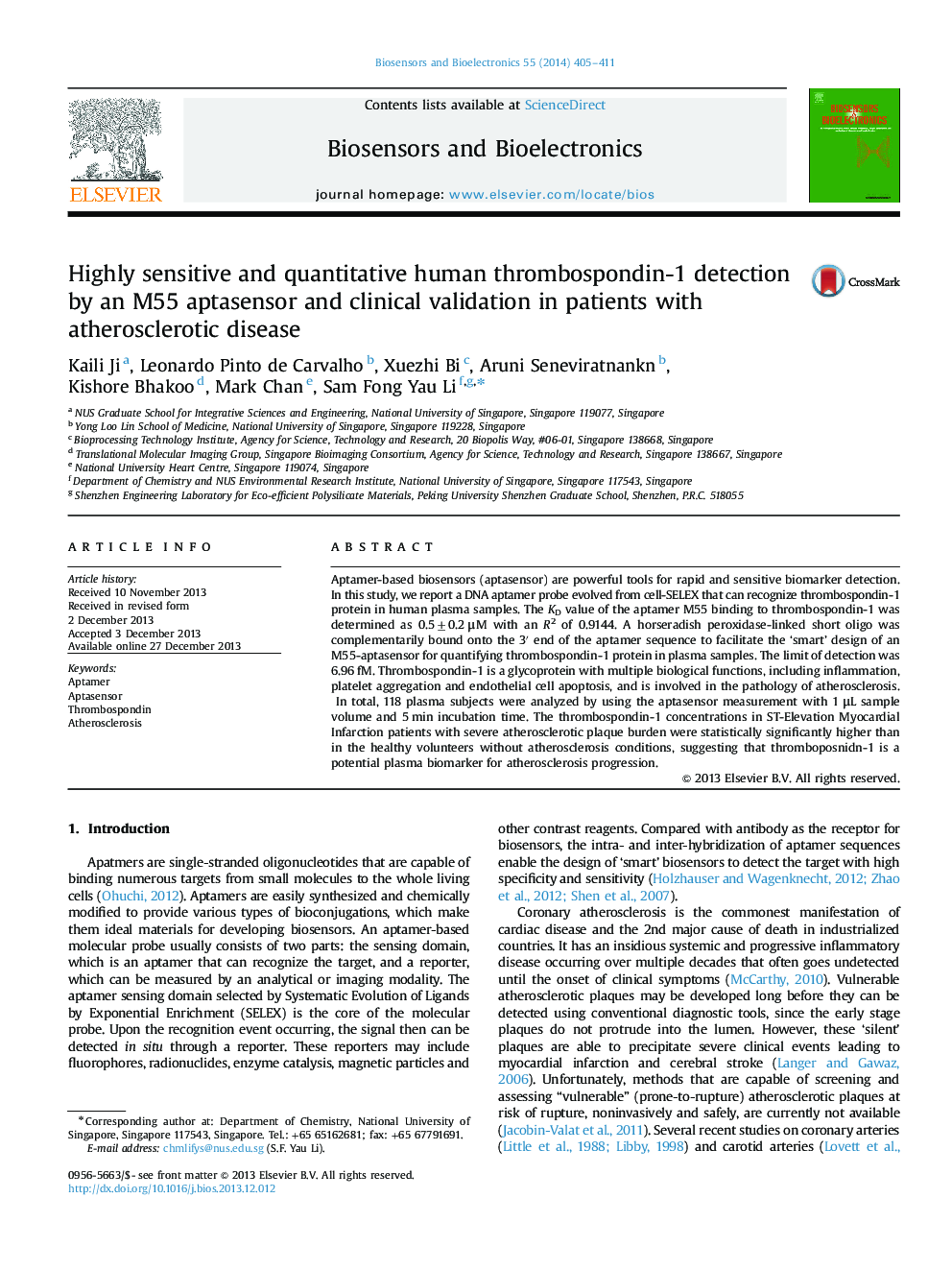| Article ID | Journal | Published Year | Pages | File Type |
|---|---|---|---|---|
| 866516 | Biosensors and Bioelectronics | 2014 | 7 Pages |
•We identified a DNA aptamer probe that can recognize thrombospondin-1.•The aptamer was used to develop an aptasensor for thrombopsondin-1 detection.•Sensitivity down to low fmol/L range was achieved.•Thrombopsondin-1 levels in patients and healthy human plasma were quantified.•Thrombopsondin-1 may serve as biomarker to predict atherosclerotic plaque burden.
Aptamer-based biosensors (aptasensor) are powerful tools for rapid and sensitive biomarker detection. In this study, we report a DNA aptamer probe evolved from cell-SELEX that can recognize thrombospondin-1 protein in human plasma samples. The KD value of the aptamer M55 binding to thrombospondin-1 was determined as 0.5±0.2 μM with an R2 of 0.9144. A horseradish peroxidase-linked short oligo was complementarily bound onto the 3' end of the aptamer sequence to facilitate the ‘smart’ design of an M55-aptasensor for quantifying thrombospondin-1 protein in plasma samples. The limit of detection was 6.96 fM. Thrombospondin-1 is a glycoprotein with multiple biological functions, including inflammation, platelet aggregation and endothelial cell apoptosis, and is involved in the pathology of atherosclerosis. In total, 118 plasma subjects were analyzed by using the aptasensor measurement with 1 μL sample volume and 5 min incubation time. The thrombospondin-1 concentrations in ST-Elevation Myocardial Infarction patients with severe atherosclerotic plaque burden were statistically significantly higher than in the healthy volunteers without atherosclerosis conditions, suggesting that thromboposnidn-1 is a potential plasma biomarker for atherosclerosis progression.
